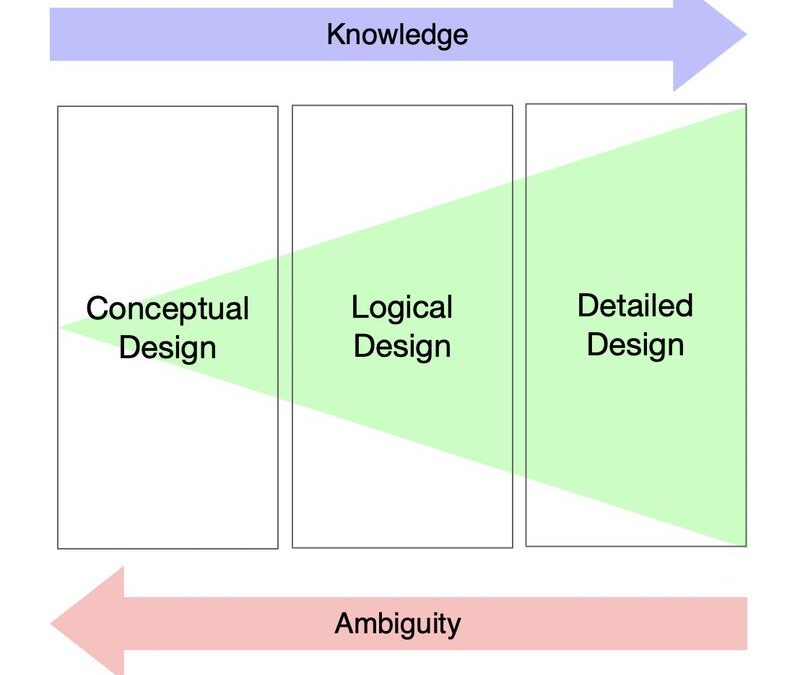In any design process, whether it’s for a business architecture, a software solution, or a complex system, we journey through various stages, each with its own challenges and opportunities.
The featured diagram captures this journey:
- Conceptual Design: At this early stage, we work with high-level ideas and broad concepts. Ambiguity is at its peak, and knowledge is limited. This is where creativity thrives, as we’re not yet bound by specific details.
- Logical Design: As we move forward, these ideas take shape. We begin to structure and organise our thoughts logically, bridging the gap between abstract concepts and detailed specifications. Ambiguity decreases as our understanding grows.
- Detailed Design: Finally, we arrive at the most specific stage. Here, every aspect is fully developed and documented. Our knowledge is now at its highest, and ambiguity has been reduced to a minimum. This is where precision and exactness come into play.
- The Transition: As we progress through these stages, the green shading represents the gradual shift from ambiguity to clarity. With each step, we move closer to a fully realised design that meets the needs and objectives of our project.
The takeaway? Embrace the ambiguity in the early stages—it’s a necessary part of the process. But always aim to reduce it by gathering knowledge and refining your design as you go.
The end goal? A comprehensive and well-detailed design that leaves no room for uncertainty.
What’s your design journey? Join the conversation on Linkedin …

